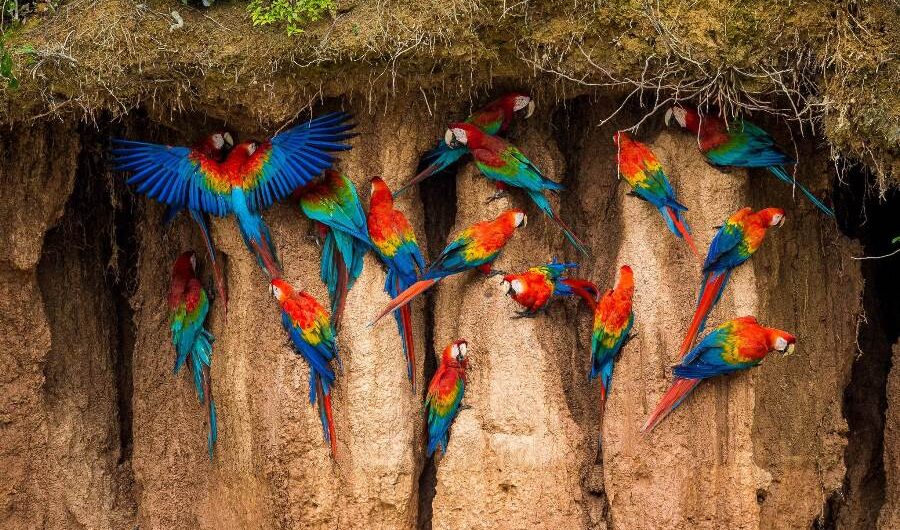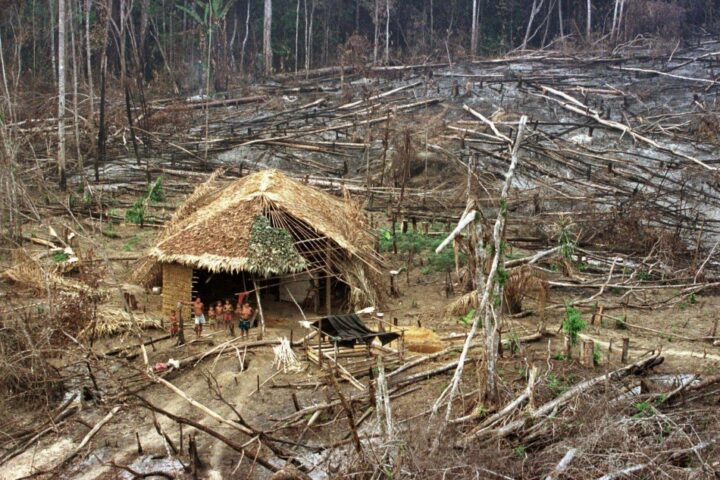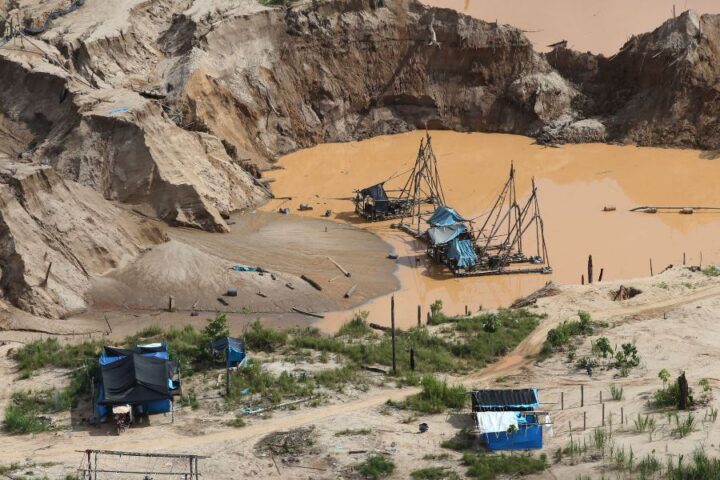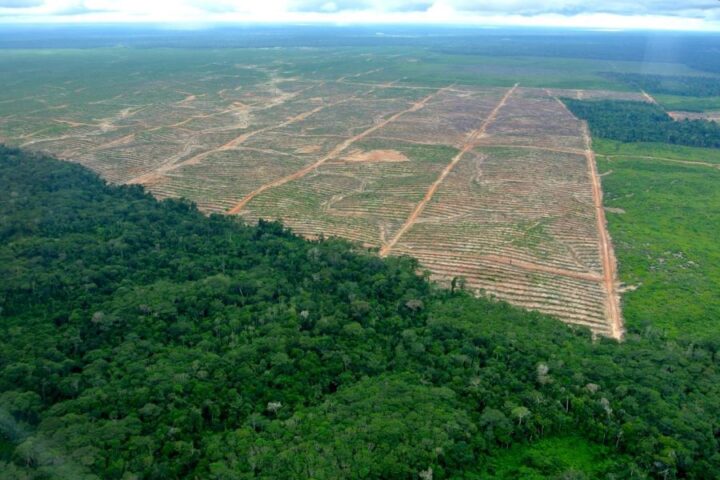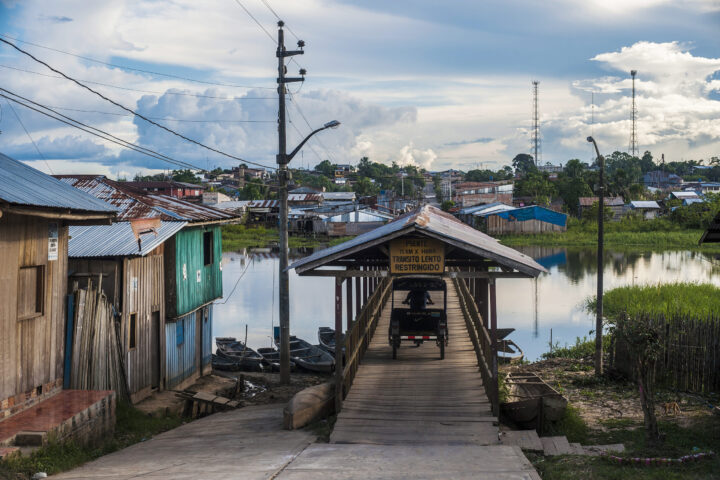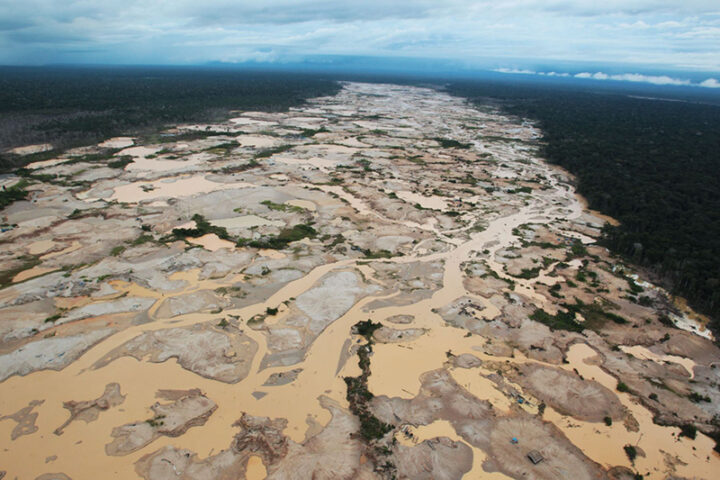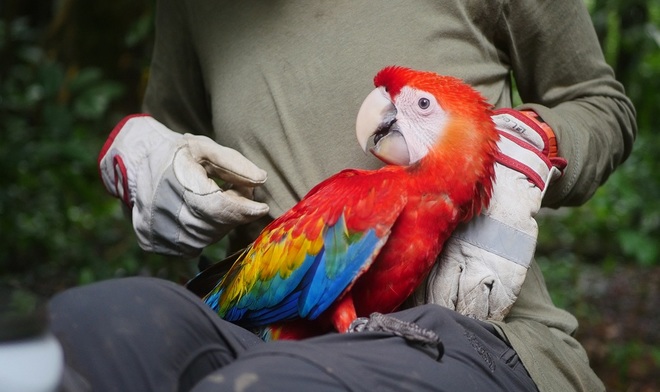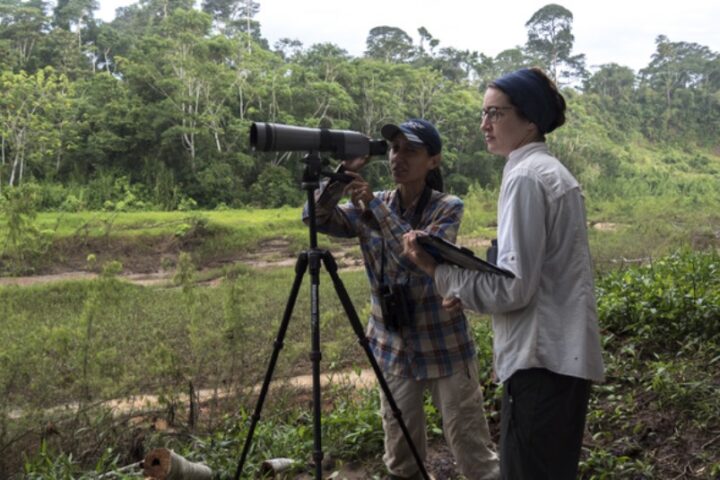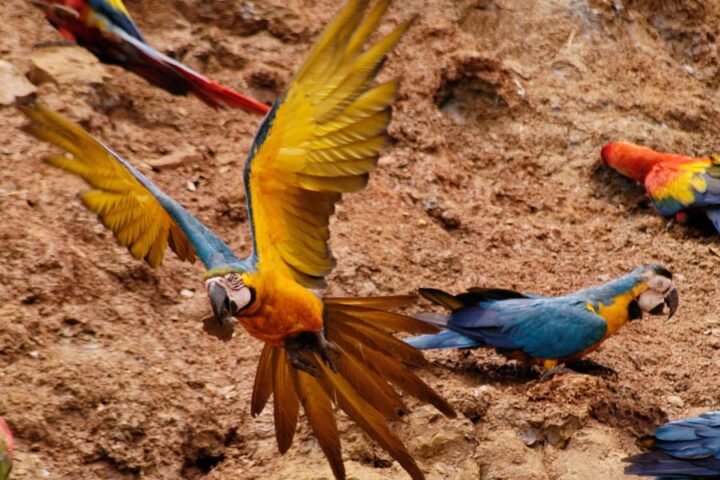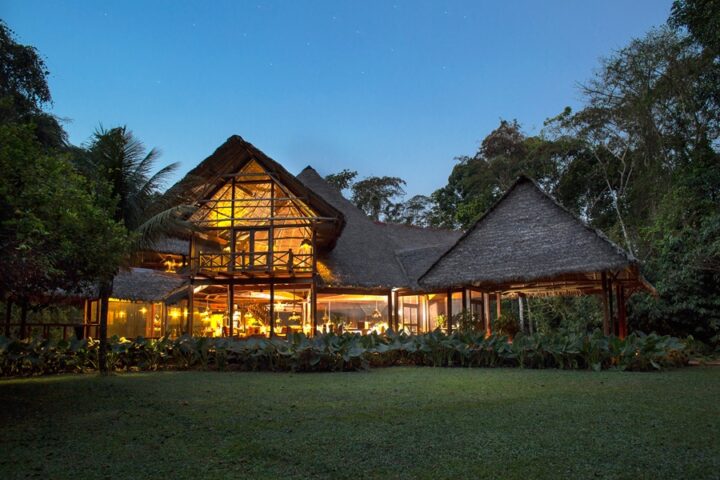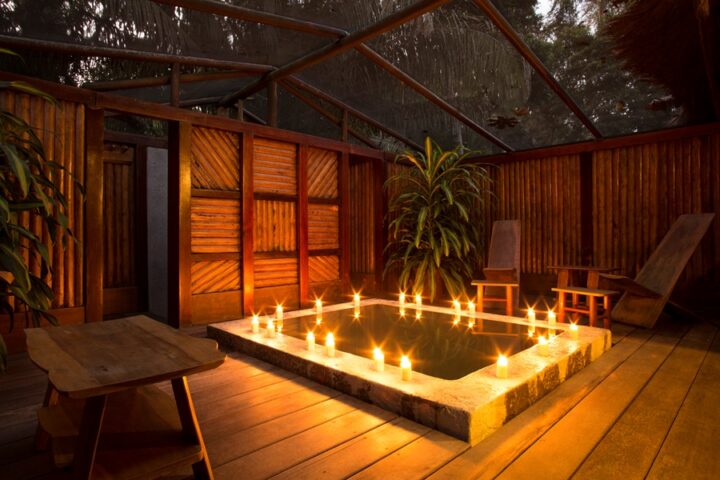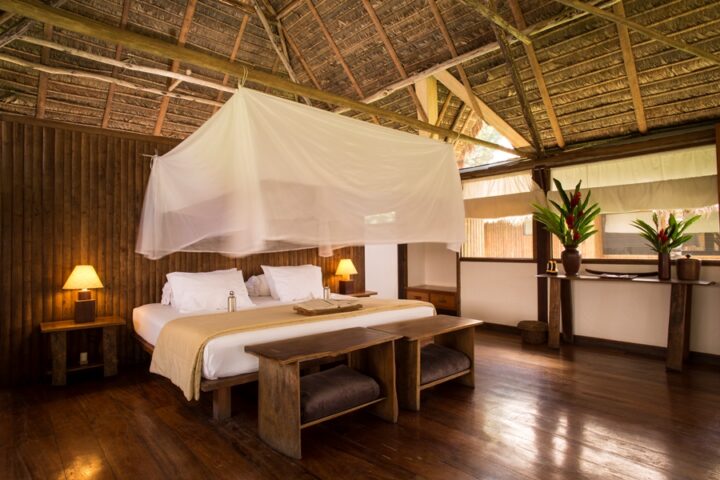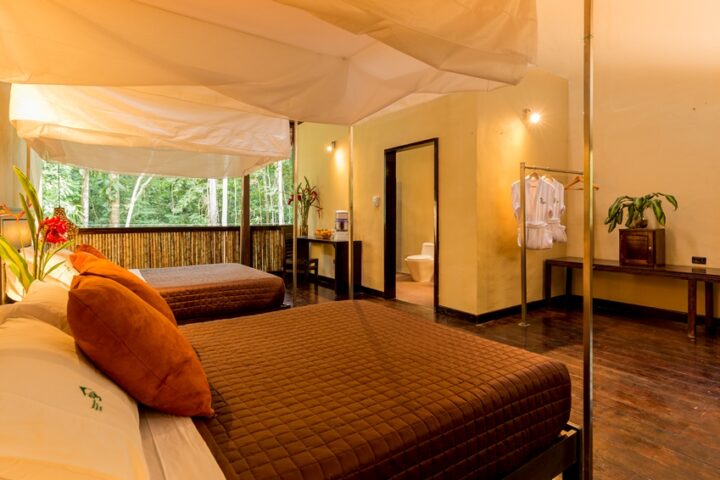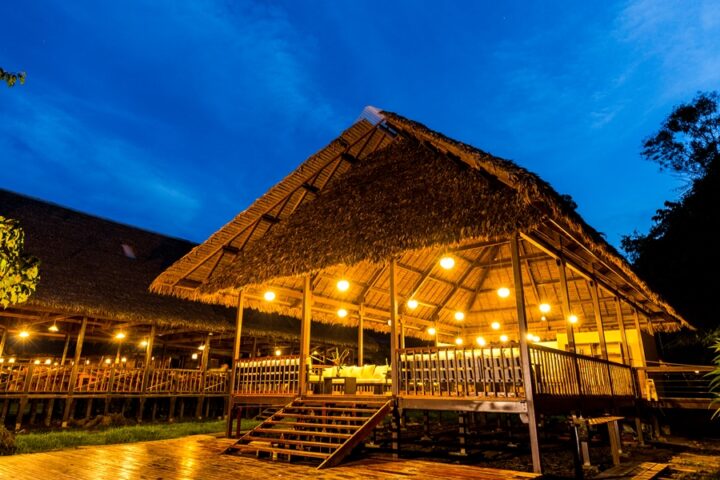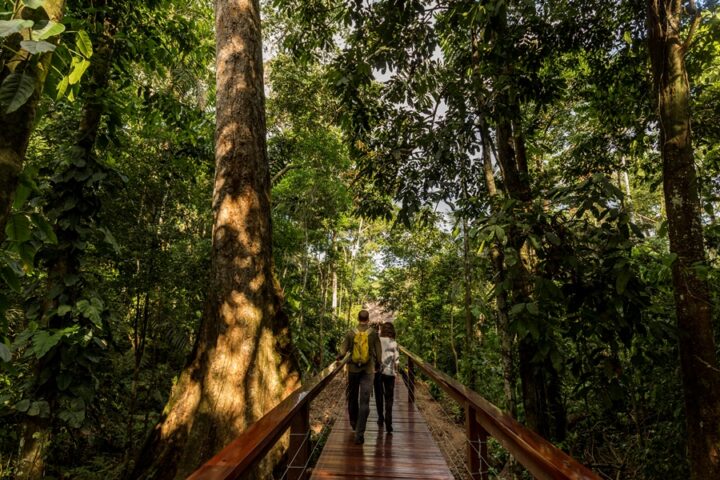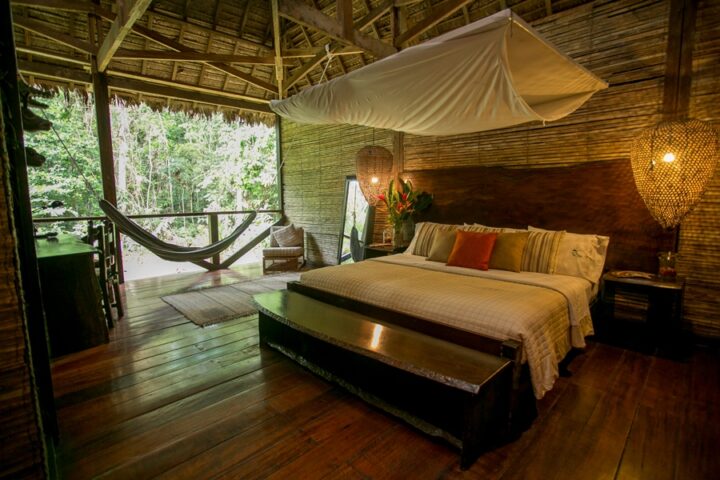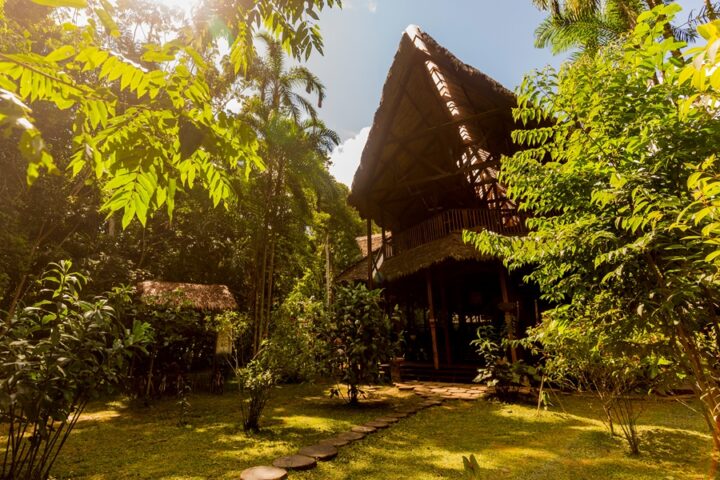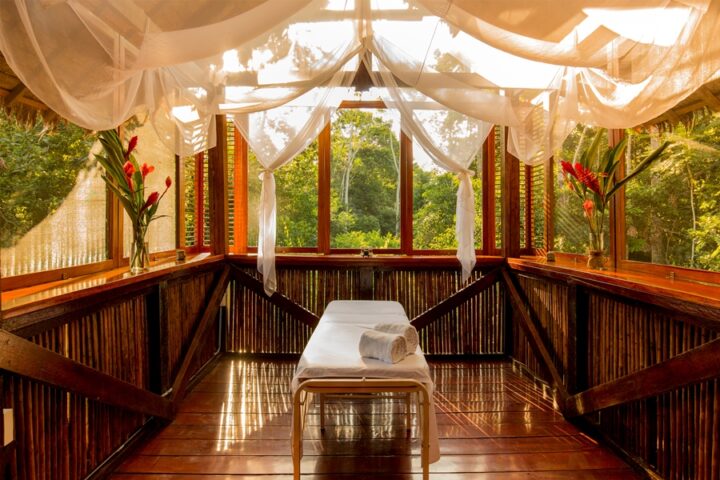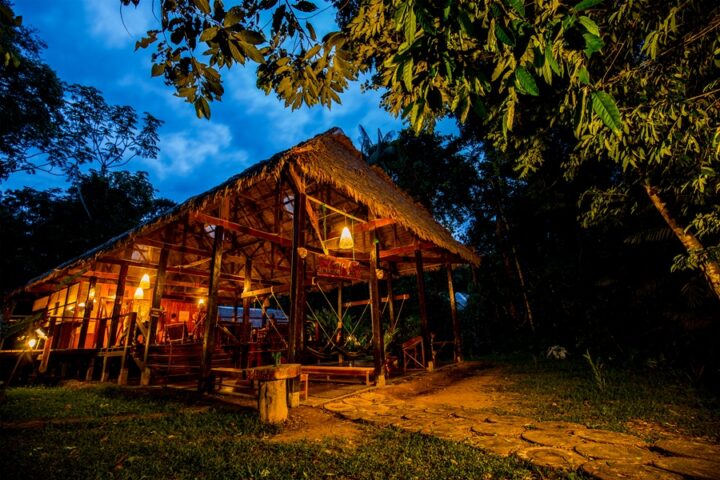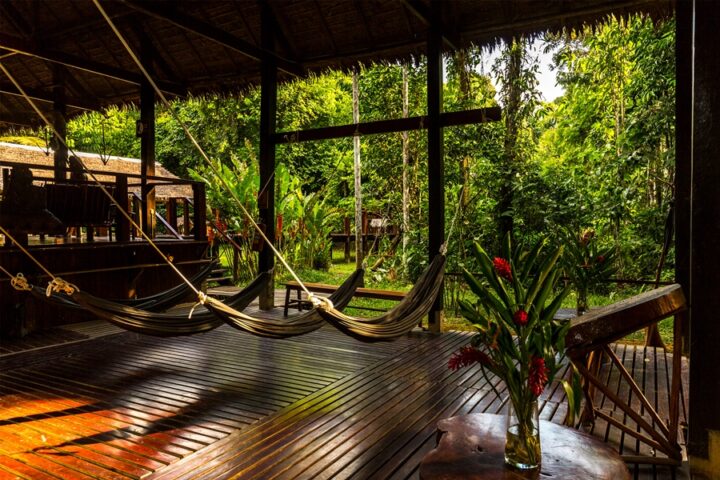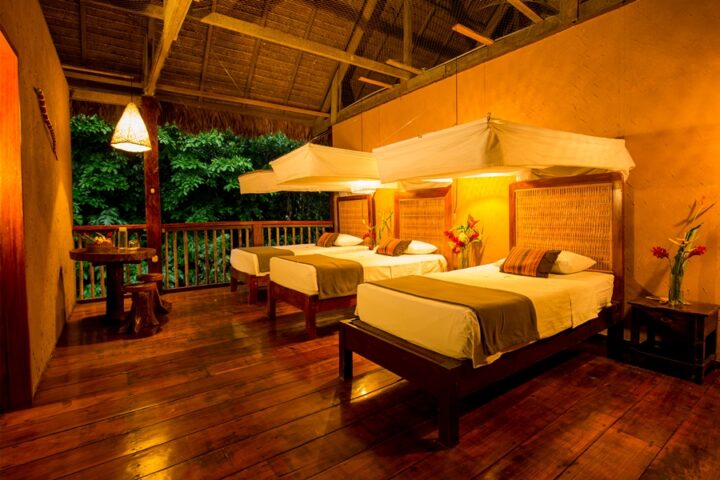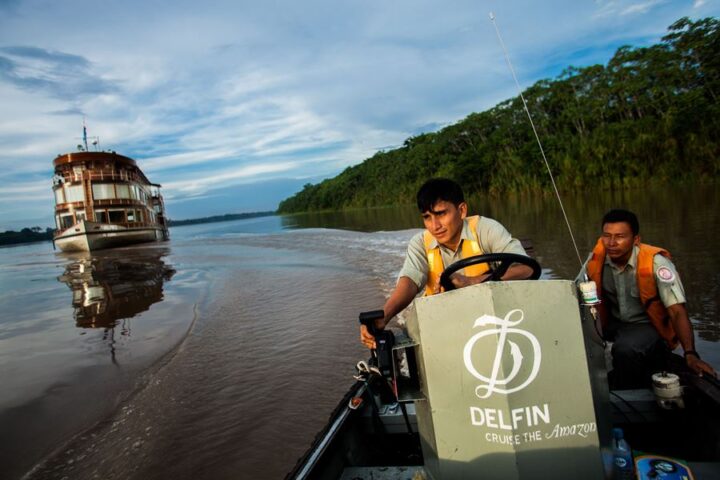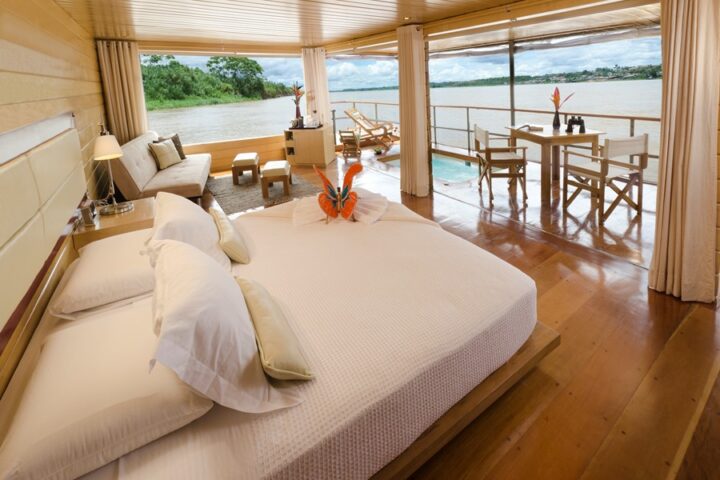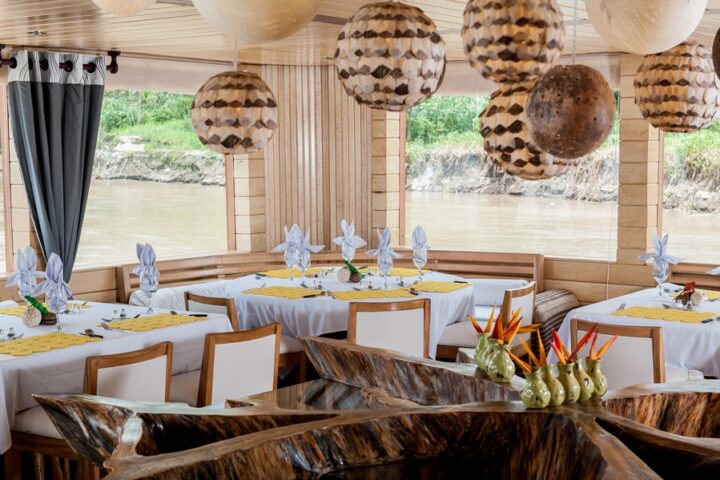The Amazon rainforest is the beating heart of our planet. The Amazon’s health correlates to the health of the rest of the earth. More than 20% of the world’s oxygen is produced in the Amazon, and Amazon rainforest animals make up more than half of the plant, animal, and insect species in the world. This all makes for an ecosystem that is vital to protect, and now more than ever, ecotourism initiatives are playing a key role in helping Amazon sustainability continue to thrive.
Threats to the Amazon
The Amazon rainforest regularly faces brutal damage caused by illegal logging and illegal mining. Illegally logged wood from the Amazon is more commonplace than you might think – in fact, odds are pretty high that something you own was made with illegally sourced wood. It’s not uncommon for an illegal logger to mix logs from protected land with legally obtained logs to reduce their chances of being caught.
Another major threat to Amazon sustainability is the epidemic of illegal mining in the rainforest. Illegal miners look for gold, aluminum, titanium, iron, and other materials. This creates major ecological damage for protected areas and communities, and the mercury used in gold mining is especially dangerous – it can leak into local rivers and contaminate the fish and water supply for local indigenous communities.
Illegal Gold Mining Madre de Dios region
Illegal gold Mining has long been an issue, and it has increased since the 2008 financial crisis. It is unfortunately one of the most lucrative illegal activities in the Amazon, and its processes can cause great harm to Peruvian communities and the environment. In Madre de Dios, an area of the Peruvian Amazon, this practice is especially harmful and widespread, and has led to the destruction of more than 60,000 hectares of land. The process also involves the unmonitored use of mercury, which makes for an added danger to communities living in the area. Another consequence of illegal mining is the conflict that can arise between miners and the local indigenous communities and farmers who call this region home.
What illegal gold miners leave in their wake is destroyed, stripped land riddled with mercury. Sadly, in addition to devastating the environment and local communities, illegal mining can also be linked to child labor and human trafficking at the mining camps. This year, the Peruvian government has made an effort to crack down on these illegal camps, but there is still much work to be done.
Road Expansion
Another threat to Peru’s natural lands, especially the Amazon, is the construction of large roads in the region. Road that get dangerous close to protected Amazon areas like Manu National Park and Amarakaeri Communal Reserve pose a huge risk to local wildlife, biodiversity, and local indigenous communities.
When roads expand, so too do risks of ill-intentioned people using those roads for deforestation and illegal resource extraction. Of course, this can lead to severe land damage as well as dangerous potential conflicts between local communities and the people carrying out these illegal activities, who often steal local land to do so.
While roads may sound like a useful way to provide economic improvement for local communities, the reality is that there are many more less threatening ways to provide positive infrastructure for Amazon locals. Agricultural programs, more sustainable transportation options, and better decisions about land use can all make a major difference.
Logging and Palm Oil Plantations in Pucallpa
Deforestation caused by illegal logging and palm oil plantations is also a major threat to the Amazon. Near the city of Pucallpa in Ucayali, some groups illegally acquire rainforest land – some of which is home to indigenous communities – that they then destroy to harvest palm oil. This is often due to local civil servant corruption, so the local anti-corruption government is ramping up efforts to put a stop to these issues. This region is a major producer of palm oil, which is still a somewhat new trade in Peru. Oil palm, used to make the oil, grows quite well in the Amazon Basin, which sadly leads to devastation of the local land.
Ecotourism helps protect the Amazon
Enter ecotourism, which plays an important role in helping to promote Amazon social responsibility. Aracari has prioritized ethical and sustainable travel since our founding in 1996, and we’ve witnessed ecotourism’s evolution into a major industry-wide interest.
The income and job opportunities brought in from eco-resorts and other forms of tourism sustainability in the Amazon can help decrease the need for locals to partake in mining and logging to survive. They also provide incentive for would-be loggers or miners to keep the surrounding rainforest pristine so tourists will continue to visit.
Ecotourism also helps raise worldwide awareness by giving travelers a firsthand introduction the vitality and importance of Amazon sustainability. Once you see such a gorgeous, delicate ecosystem in person, it’s hard to ever forget it – and you’ll feel more empowered than ever to help protect it.
The Peruvian Amazon is home several gorgeous luxury eco-lodges, and Aracari knows each one inside out. We can help you tell the difference between an establishment that’s truly making a difference and one that isn’t.
Protecting Endangered Macaws
Macaws are endangered, and issues like hunting and logging pose a major threat to their wellbeing. Positive ecotourism groups like Rainforest Expeditions focus on conservation to help keep macaws and other rare animals thriving. With the help of specially designed artificial macaw nests and continuing research on how to help macaws thrive, the population is continually protected and awareness is raised.
Great Places To Visit in the Amazon
Looking to make a positive difference in the Amazon as an ecotourist? This industry makes a fantastic effort to keep the Amazon safe, and you can be a part of it. Here are some of the best regions to visit within the Amazon.
Bahuaja Sonene National Park
This beautiful park between Madre de Dios and Puno was created to protect Peru’s only tropical wet savannah. Important creatures like the maned wolf, giant otter, and swamp deer call this park home. Visitors will see abundant rivers, hills, and mountains worth gazing out upon.
Tambopata National Reserve
A gorgeous part of Bahuaja Sonene National Park, Tambopata covers savannahs and rainforest. It’s well known for its abundance of clay licks frequented by macaws and parrots. Another highlight is Sandoval Lake, an area rife with otters and black caimans, and an observation tower to take it all in. Three rivers – the Malinowski, the Madre de Dios, and the Tambopata – all cross this reserve. The reserve is home to more than 100 species of mammals, 600 species of birds, and more than 1,000 types of butterflies. It’s one of the most biodiverse areas on earth! The reserve was once the home of the Ese Eja indigenous community, and many locals still live on the reserve. The Tambopata Research Center, the only place to stay in the area, was created before Tambopata became a national reserve in 1996 – so staying there is about as remote as it gets!
Pacaya Samiria National Reserve
This region of jungle and forest sits between the Marañón River and Ucayali River. An exceedingly biodiverse area, the reserve is home to pink dolphins, giant South American turtles, and all kinds of other beautiful birds.
What we can do
One important way to help promote Amazon social responsibility is to ensure that you visit the rainforest responsibly. That means choosing eco-friendly places to stay – Aracari can help you choose truly ethical resorts. Once you arrive, be sure to leave no trace of your visit and treat your surroundings with respect. Don’t be afraid to ask questions about the delicate ecosystem around you – the more you learn, the more you can help make a positive impact!
Where to stay in the Amazon
There are a number of sustainable travel experiences worth exploring in the Amazon. Below are a few of our favorites.
Inkaterra Reserva Amazonica
Inkaterra Reserva Amazonica is the longest standing upscale property in the Tambopata area. Beautifully designed and very close to the airport at Puerto Maldonado (45 minutes downstream on the Madre de Dios River) it offers a fantastic option to visit the area and become exposed to its beauty and the threats that affect it in relatively little time. Inkaterra has sustainability and conservation in its DNA and is one of the leading companies in Peru to foster and promote sound ecotourism practices.
Tambopata Research Center
Tambopata Research Center is the only lodge located in the Tambopata National Reserve, a remote protected area known for some of the most pristine rainforest in the world. The reserve is much loved for its famous Tambopata Macaw Project, a program dedicated to researching macaws. Guests can pay a visit to Chuncho Clay Lick, a stunning macaw clay lick where the birds gather each day. There’s also an observation tower you can visit each morning to see the Amazon rainforest animals on the canopy.
Refugio Amazonas
Refugio Amazonas is an excellent ecotourism option for traveling with kids. One of the most popular features of this luxurious lodge is the Children’s Rainforest Trail, the only attraction in the Peruvian Amazon created specifically with kids in mind. With 3 days 2 nights you can thoroughly enjoy many of its wonderful attractions and programmes.
At Tambopata you can also take part in the Wired Amazon, an initiative that Aracari is especially passionate about. This collection of citizen science projects focuses on studying and preserving the Amazon, and allows guests to help scientists with their data collection.
Posada Amazonas
Posada Amazonas has a special partnership with the local Infierno indigenous community of Ese Eja. Local community members are employed at the lodge, and most of the profits of the lodge go back to the tribe. It is also possible to visit tis lodge on a 3 day 2 night experience.
Delfin Amazon Cruises
If you’re looking to get to know the Amazon in a totally different (and eco-friendly!) way, you can cruise along the Amazon River with Delfin Amazon Cruises. Delfin’s vessels are locally made with sustainable materials and offer five-star luxury onboard.
Protecting the Amazon is a collaborative effort. Every positive step makes a difference, no matter how small!
Contact us today to plan your very own tailormade Amazon adventure or browse our many itineraries that cover the Amazon!

